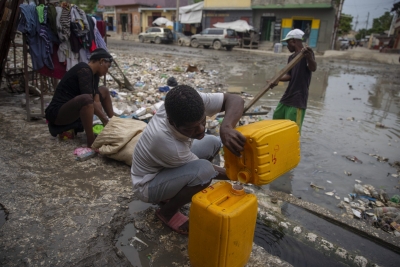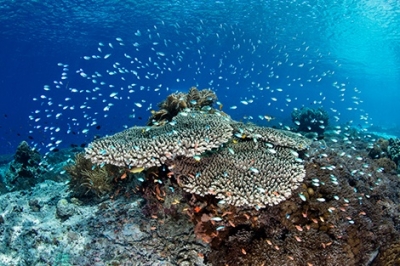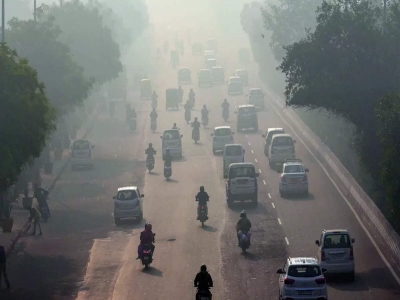
1. Save power
Switch off lights, fans and appliances when not in use. Also watch out for gadgets, that are in standby mode. Though they help conserve power when the device is not in use, they are not powered-down. They should be unplugged. Replace old incandescent light with energy-efficient alternatives. Use air conditioners only when necessary. Service appliances regularly to avoid energy wastage. Try to switch to solar power. Follow the examples of residents who run their electronic equipment on solar power. Get rid of power guzzling electrical and USB chargers and use solar batteries to charge your devices
2. Conserve water
Many of us think that there is no shortage of water because it covers more than 70% of the Earth's surface. But the water readily available to us is less than one percent of that. The first step in conserving water is to fix leaks. Turn off the tap while brushing your teeth. For gardening, use water used for rinsing fruits, vegetables, rice etc. Reuse water wherever possible. Use bucket water or a water-efficient showerhead for bathing. Run your washing machine and dishwasher only when they are full. Ensure your house has a rainwater harvesting system in place.
3. Say no to plastic
It is not enough if you use less plastic, it is time we said no to plastic. Replace all throwaway plastic with environment-friendly materials. The manufacture and use of plastic is one part of the problem. The way we dispose it is the other and scarier part. Plastic does not decompose; it has to be burnt to be destroyed. Burning releases toxic chemicals into the air. The plastic waste we toss away irresponsibly find its way into our oceans. This in turn affects marine life. But you can put an end to plastic pollution. Carry a cloth bag whenever you go shopping and carry a refillable water bottle when you step out of house. Change from plastic pencil boxes and snacks boxes to a cloth and stainless steel alternatives, respectively. Avoid receiving unnecessary plastic utensils. Drink directly from a glass instead of using straws, and buy ice cream in a cone instead of a plastic cup.
4. Eat organic
Organic produce are not only good for your health but also for that of the environment. Grown with natural fertilizers such as manure and compost, organic food are fresh and free of chemicals (pesticides). Organic farming reduces pollution, conserves water, reduces soil erosion, increases soil fertility, and uses less energy. You can even grow your own vegetables and fruits in your garden or terrace. Those who grow their food without chemicals and pesticides are helping the planet in a major way.
5. Do not waste food
Around the world, millions go without three meals a day, while many die from hunger. It is a moral responsibility not to waste food. It's not just the effort of the person who cooked the food that goes waste, but also the energy and natural resources in processing, transporting and storing of all the ingredients. Food waste that ends up in landfills produces a large amount of methane, a powerful greenhouse gas. Add to your plate only what you can eat. If there's excess food due to unavoidable circumstances, share it with someone or donate it to food banks. Do not stock food for days in the fridge. Buy only what is necessary.
6. Grow green
Growing a tree is a lifelong investment. It is something everyone can do to reduce carbon dioxide, a primary greenhouse gas that causes climate change. Try planting saplings in the neighbourhood to make the locality green. Get your friends also to plant a sapling and nurture each of your trees. Monitor and compare their growth. It's a lot of fun.
7. Cycle to school
Fuel is produced by pumping extraordinary amount of carbon into the atmosphere, Emission from vehicles is also a major cause of global warming. By avoiding cars and two-wheelers, we can greatly reduce our carbon footprint. Cycle to school or simply walk. Walking and cycling are good exercises too. Take public transportation wherever possible. When many people use a single mode of transport at the same time, fuel consumption is reduced.
8. Adopt the 3r mantra
Reduce: We understand that it is a temptation to purchase an extra set of sketch pens or an extra pen drive. You buy them thinking that it may come handy when you lose the other. Most often than not such a situation never arises, leaving the extra sets lying unused for years. Promise yourself to avoid unnecessary accumulation of materials. Your room will become less cluttered and more organised. Simplify your life as much as possible. Only keep belongings that you use or enjoy on a regular basis.
Reuse: If you need something, see if you can purchase it second-hand. There are a number of sites that sell used items. You can also get a used bicycle or used furniture from someone who is relocating. Also avoid one-time use items such as disposable glasses or bottles. They end up in the landfills and oceans, causing environmental pollution.
Recycle: Before discarding something into the bin, think if you can make use of it in some way. A water bottle could become a pen stand and old newspapers could be turned into paper bags. Try to recycle things as much as possible, this way you can also reduce your consumption.
9. Be mindful of e-waste
A whopping 20 to 50 million metric tonnes of e-waste are disposed of every year. Unfortunately, only about 12.5% of it is recycled. Most devices such as cell phones, laptops, memory sticks, TVs, tablets and batteries end up in landfills and contribute to air and water pollution. Ask your parents to donate or sell working electronics. Refrain from buying gadgets you may not use.
10. Eco-friendly celebrations
Regardless of the occasion, Indian celebrations seem to revolve around firecrackers, lights, and loudspeakers. Firecrackers are nothing but chemicals and they pollute the air. Same for chemical colours. Quieter celebrations with LED lights, decorations with eco-friendly materials would lead to a healthier environment.
Picture Credit : Google







